Shiwan Pottery Sculpture, Foshan City, Guangdong Province, is a traditional folk pottery making technique, one of the China Intangible Cultural Heritage.
Shiwan pottery was first fired in the Tang Dynasty, flourished in the Tang and Song Dynasties, and prospered in the Ming and Qing Dynasties. After the founding of New China, the manufacturing level and artistic level of Shiwan pottery sculpture have been greatly improved.
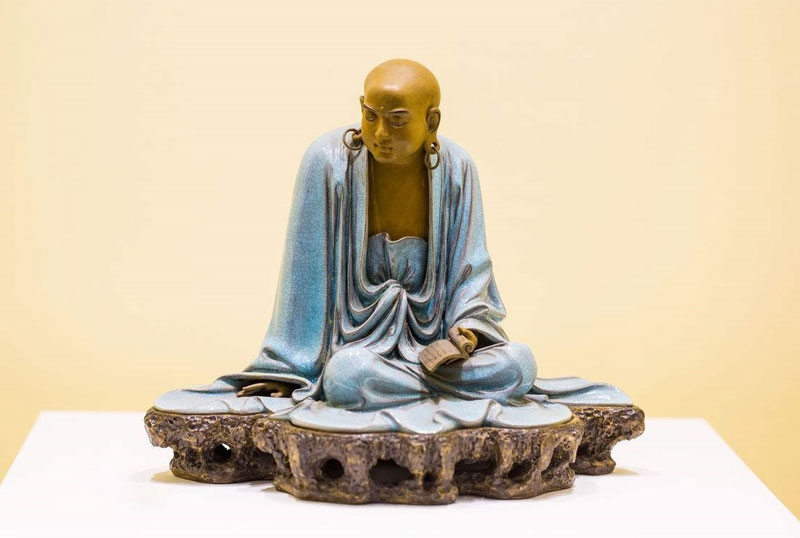
◆ Historical Origin
Shiwan pottery was first fired in the Tang Dynasty. In the early days, it was mainly used to produce daily necessities. Its works are good at imitation and creation, originated from life, and are skilled in craftsmanship. Compared with official kilns, Shiwan pottery exists because of the needs of the people. Its shapes and themes are popular with the people, such as pumpkins, lychees, bitter melons, buffaloes and other common Lingnan scenery, with a strong folk color.
After several generations of inheritance, Shiwan potters have created kiln-changing glazes with colorful kilns based on the kiln-changing glaze technology of Jun kiln using local clay resources. Among them, Jun blue glaze, Jun red glaze, Cuimao glaze, etc. are deeply loved by people. This kind of Shiwan pottery imitating Song Jun glaze was called "Guangjun" from Ming Dynasty to early Qing Dynasty. Because its body is clay, it is also called "Nijun".
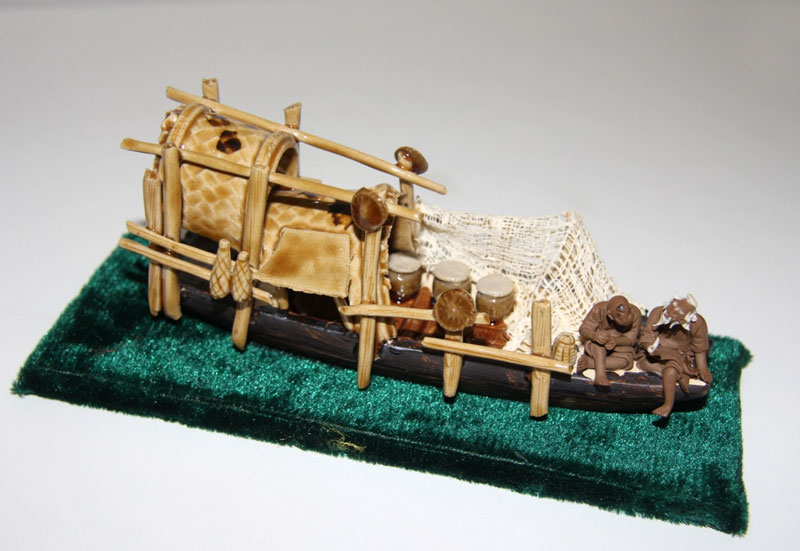
During the Ming Dynasty, Shiwan pottery sculpture had a great development, breaking the past situation of single daily-use ceramic exports. Various products such as artistic pottery sculpture, architectural garden ceramics, and handicraft pottery were exported in large quantities.
In the middle and late Ming Dynasty, Shiwan pottery art paid more attention to culture and artistic taste on the original basis, and the variety was also richer. The "Shiwan figurines" produced in the Qing Dynasty became famous for creating colorful, elegant and simple glaze colors, which established its solid position in the ceramic industry at that time.
In the fifty years since the founding of New China, Shiwan pottery sculpture craftsmanship has made great progress from the subject matter and content of the works to the expression techniques. Shiwan pottery sculpture is also highly praised by people at home and abroad because of its rich and colorful products.
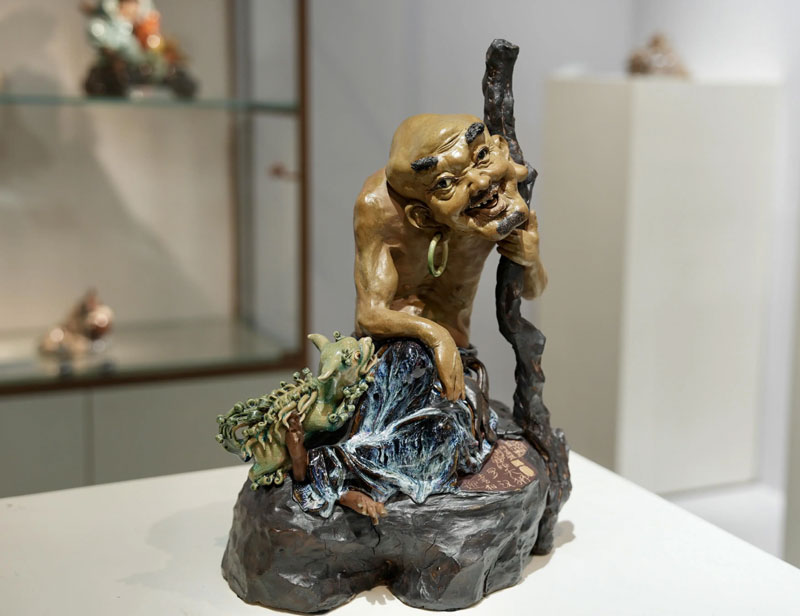
◆ Craft Features
• Style
Shiwan pottery sculpture has the characteristics of humanity, locality and nationality, and has a unique artistic style in creation. The "Shiwan figurine" pottery sculpture technique can be divided into five categories according to the physical form: figure sculpture, animal sculpture, vessel, micro-sculpture, and tile ridge sculpture.
The "Shiwan figurine" pottery sculpture technique represented by figure modeling has both form and spirit. It absorbs the essence of various cultural arts, combines high realism with moderate exaggeration, and combines life interest and artistic taste, forming a distinct local style.
• Modeling
Shiwan pottery sculpture craft modeling is vivid and lifelike. Regardless of the depiction of figures, animals or vessels, the products are committed to the typical shaping of art. Each work has distinct personality characteristics. Various shapes have reached the artistic realm of hundreds of objects and thousands of faces, with less similarity, and the image is meticulously delineated, so the image is lifelike.
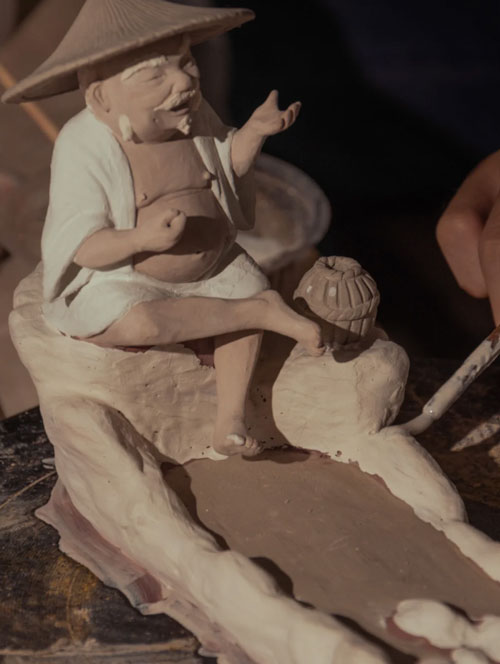
• Body glaze
The body glaze of Shiwan pottery is thick and simple. It has the quaint and heavy characteristics of thick body wall and thick glaze layer. There are more than 70 traditional glaze colors, plus 12 crystalline glazes first created in China in 1963, a total of more than 90 glaze colors. These nearly 100 glaze colors add colorful artistic beauty to Shiwan pottery art. Shiwan's famous glazes are of various varieties, with high appreciation value and scientific achievements.
• Techniques
Shiwan pottery techniques are colorful. In the molding techniques of pottery craft products, handprints and roll molding are still retained. In the product modeling techniques, the traditional knife modeling, press modeling, pinch modeling, and stick modeling are inherited and developed, so that various shapes have vivid artistic effects.
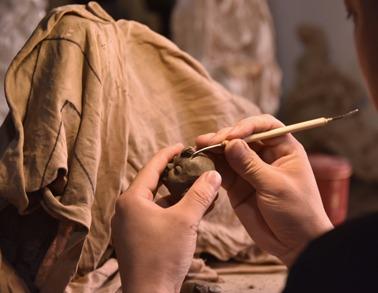
◆ Process flow
The production process of Shiwan pottery can be divided into the following order:
- Raw material processing
- Clay molding
- Glazing
- Calcination
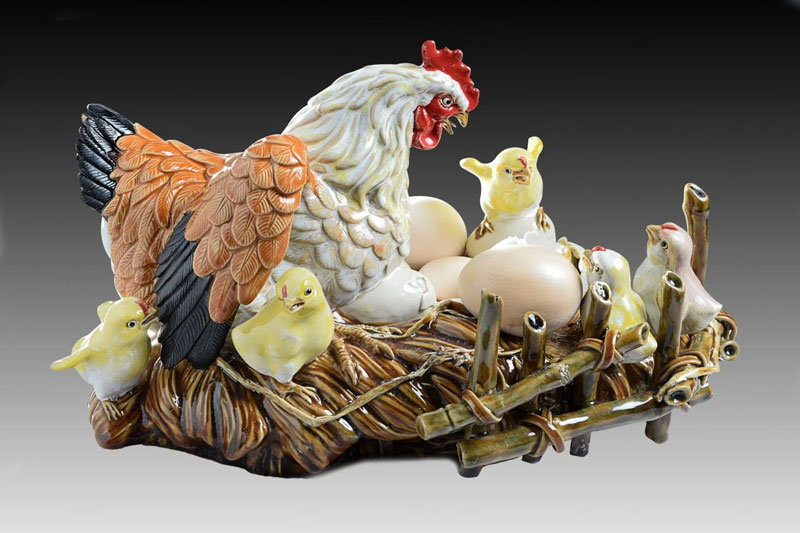
◆ Inheritance and protection
• Inheritance value
“Shiwan ceramics is the essence of art accumulated over thousands of years, with high historical value, scientific value and artistic value. It has not only made outstanding contributions to the Lingnan cultural treasure house, but also played a positive role in promoting cultural exchanges between China and the world.
• Inheritance status
Shiwan pottery is facing the dilemma of no successors. The limited market space and the realistic living environment make it difficult for young people to take this skill as a lifelong career. Under this situation, the traditional skill of Shiwan pottery is difficult to preserve and urgently needs people's protection.
